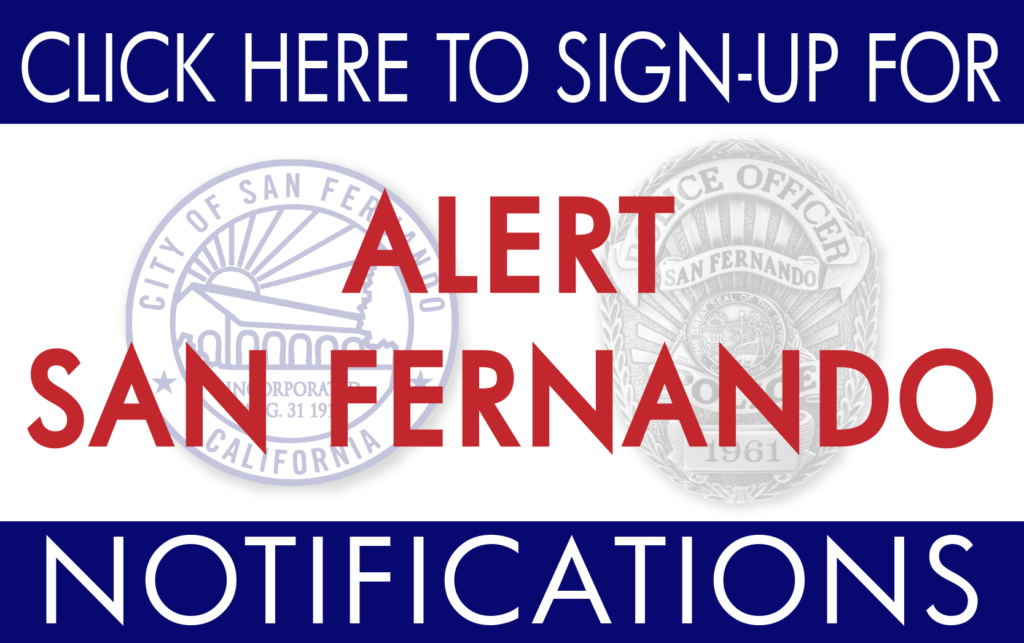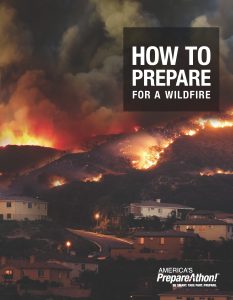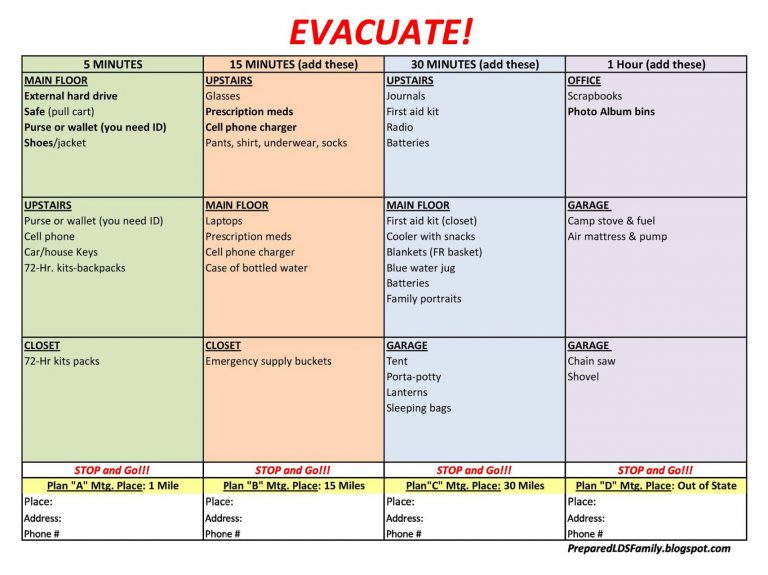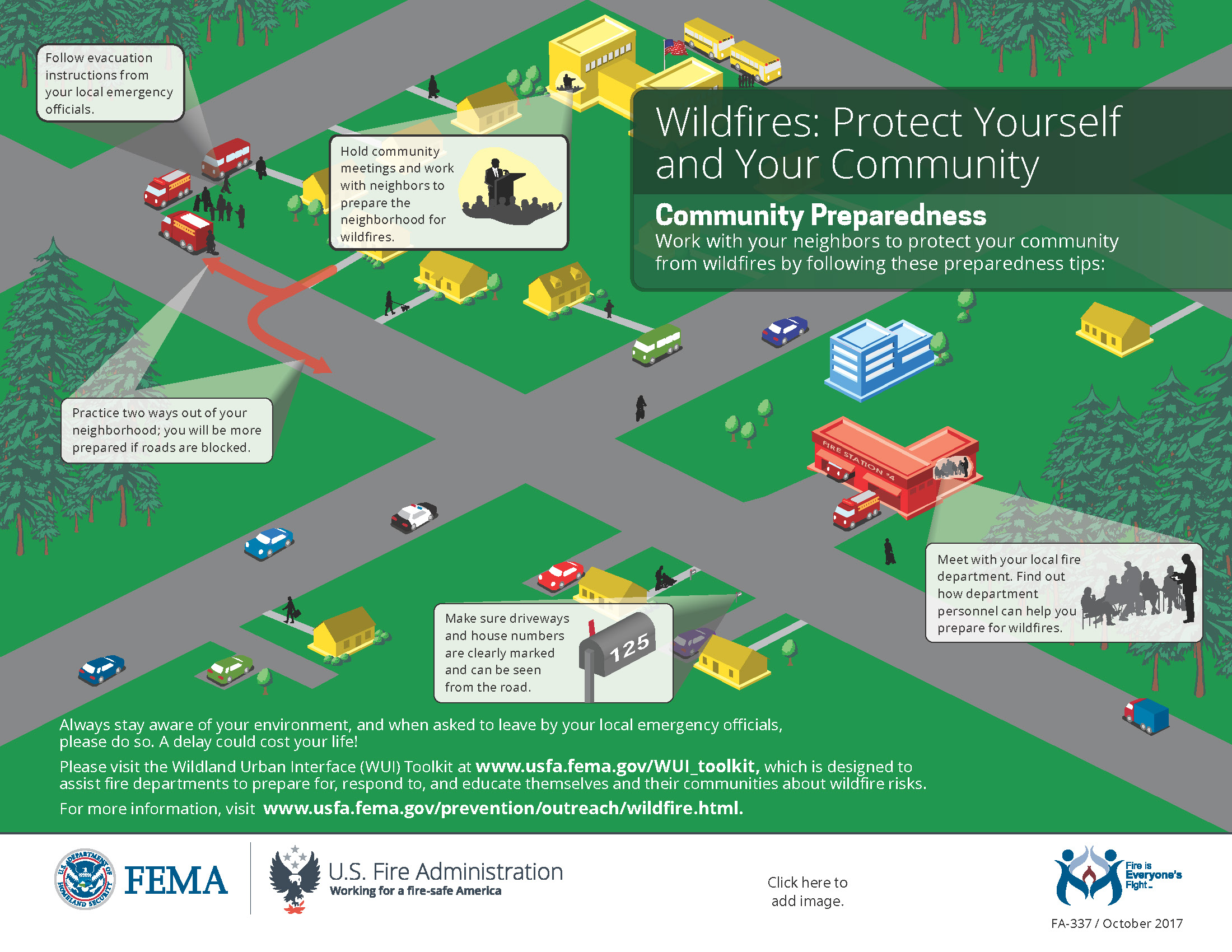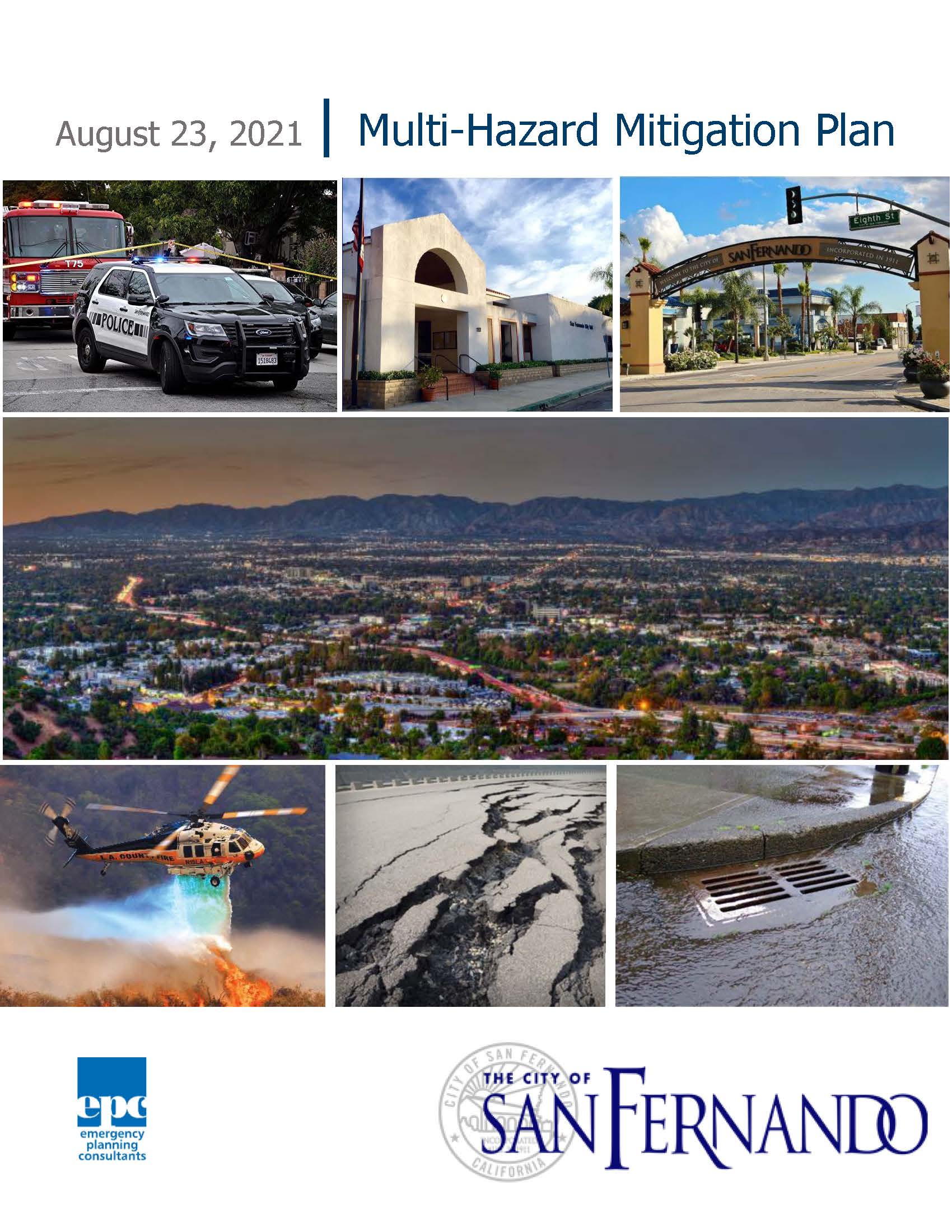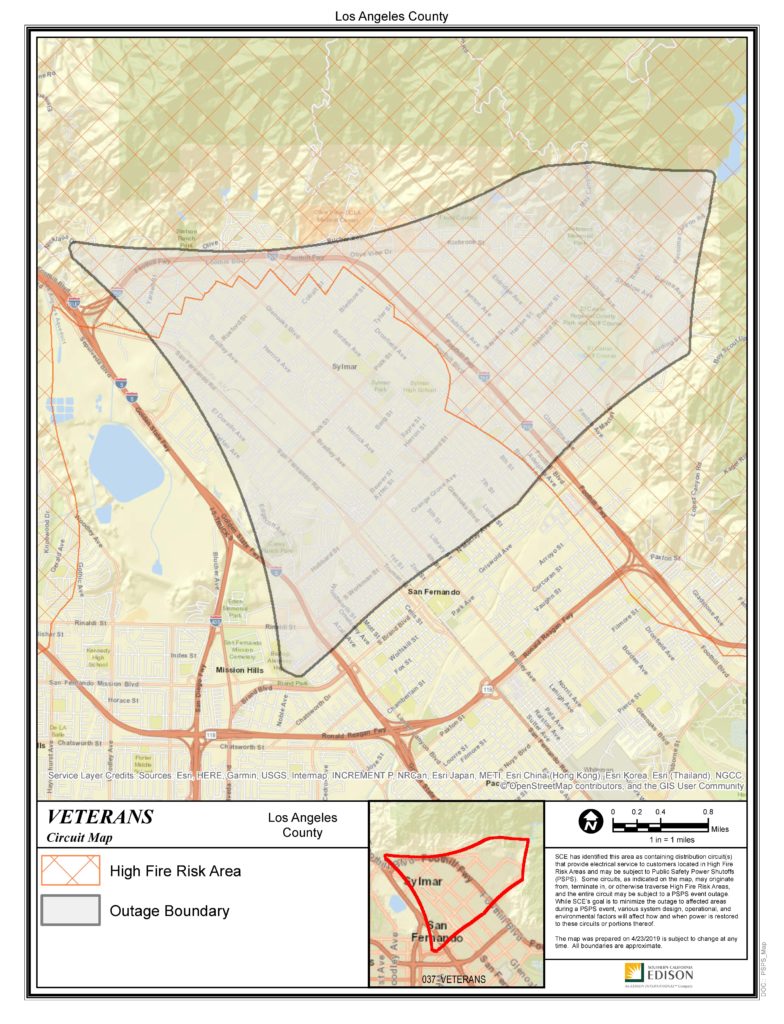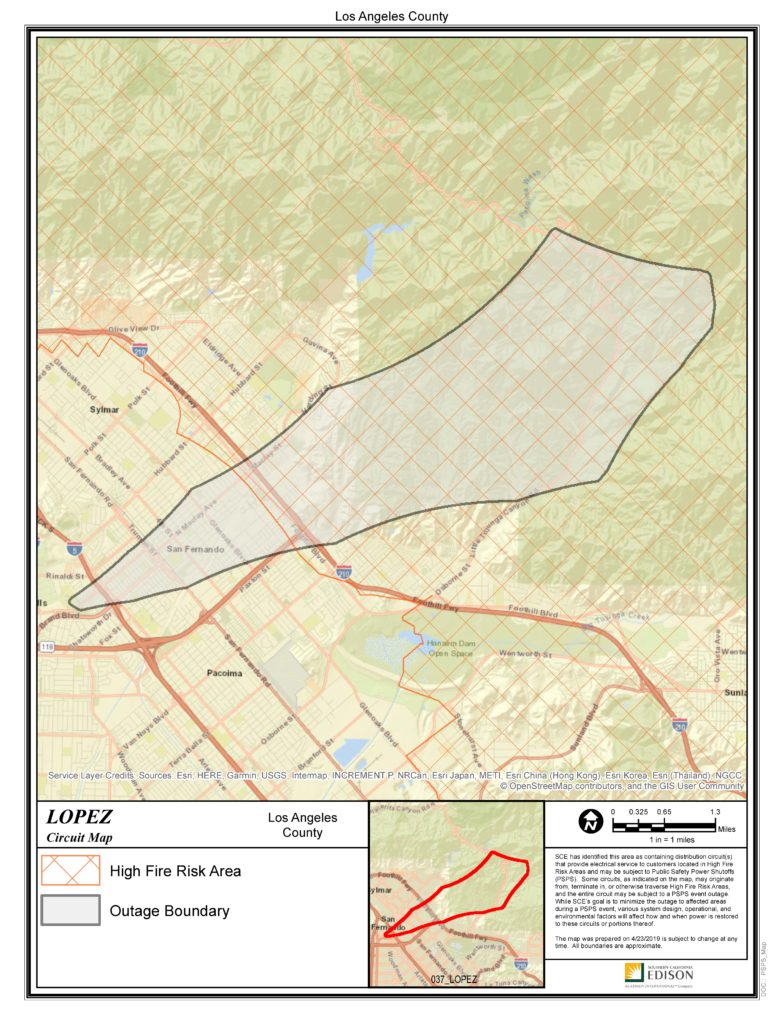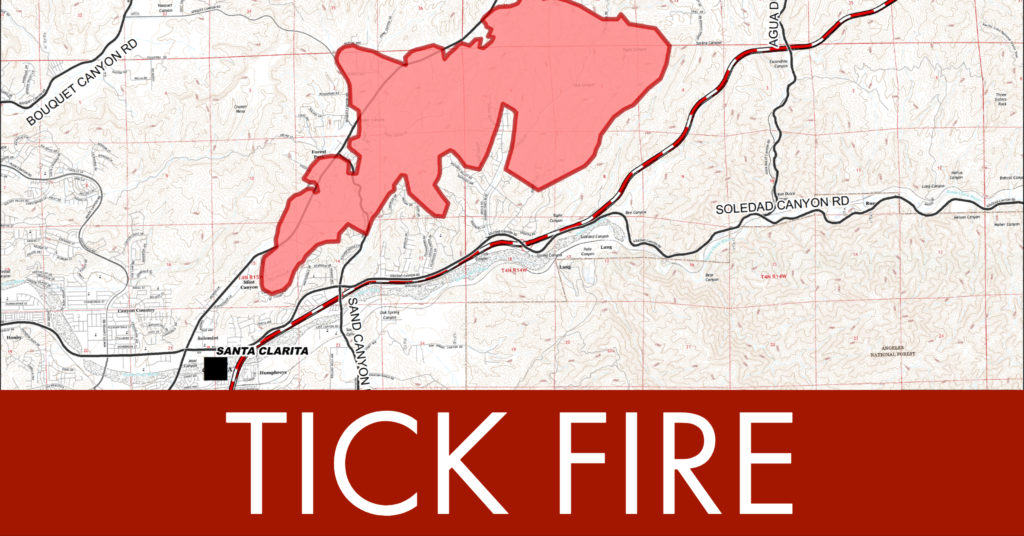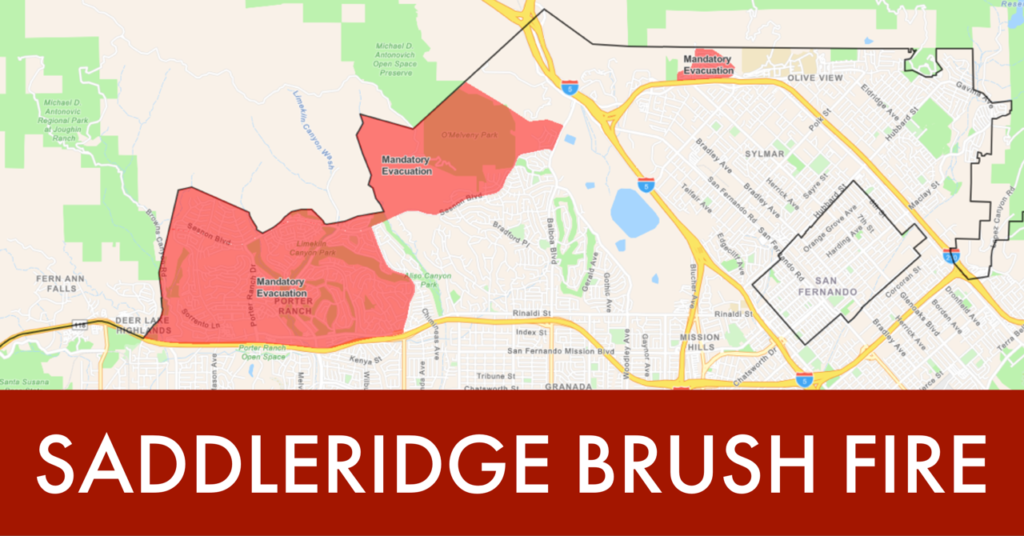IF YOU ARE EXPERIENCING A LIFE-THREATENING INCIDENT, CALL 9-1-1 IMMEDIATELY
ALERT SAN FERNANDO
Alert San Fernando uses both text and voice messages to keep residents informed about emergencies and important issues like:
- Road Closures
- Severe Weather
- Utility Failures
- Power Outages
- Traffic Alerts
- Missing Persons
- And Much More!HOW DOES THE SYSTEM WORK?
In the event of an emergency, residents and community members will receive a message with the latest information and safety instructions. Alert San Fernando sends a message through your primary contact path. If you don’t confirm receipt of the message, the system will try to reach your second contact path and continues trying to reach you until you confirm receipt.
HOW ARE ALERTS SENT?
Residents and community members may receive alerts via:
- Home, Cell or Business Phone
- Email
- Hearing Impaired Receiving Devices
- Push Notifications
- SMS
- Text Messages
- And Many More!
If we can’t reach you, we can’t alert you! The success of this service depends on YOU. Having your latest contact information is the only way to ensure that we can contact you in an emergency. It only takes a couple of minutes to enroll.
THINGS YOU CAN DO TO HELP
- If you receive a call from (818) 898-1246, please answer – this is Alert San Fernando calling with important emergency information. Better yet, program Alert San Fernando into your phone’s address book so you’ll immediately recognize the number.
- If you get a text from 88911, please read it – this is ALERT San Fernando sending important emergency information. We suggest you program ALERT San Fernando into your phone’s address book so you’ll immediately recognize this number too.
- If you get an email from ALERT San Fernando, please read it. We recommend you add it to your email address book or other email whitelist so messages from Alert San Fernando do not get confused with spam.
- Let us know the preferred way to reach you and what information you prefer. Self register for emergency alerts or update your confirmation by clicking here!
All contact information registered with Alert San Fernando is maintained in a secure manner and never sold or used except to provide emergency information or other urgent information.
Once you have registered for Alert San Fernando, we also recommend you register with the Los Angeles County counterpart, Alert LA. San Fernando residents are encouraged to register with both systems to ensure you receive the most up-to-date information.
HEAT ALERTS & COOLING CENTERS
| LAS PALMAS PARK | RECREATION PARK |
|---|---|
| 505 S. Huntington Street San Fernando (818) 898-7340 Recreation@sfcity.org |
208 Park Avenue San Fernando (818) 898-1290 Recreation@sfcity.org |
Click here for a list of other Cooling Centers in Los Angeles County.
- Drink plenty of water or juice
- Avoid alcohol and caffeine
- Wipe skin with cool water as needed
- Wear lightweight and light-colored clothing
- Stay inside during the hottest time of the day (11 am – 4 pm)
- Seek relief from the heat in air conditioned locations
- Check on older, sick, or frail people in your community who may need help responding to the heat
- Never leave children or pets alone in closed vehicles, even for short periods of time
ILLEGAL FIREWORKS
CALL
SAN FERNANDO
POLICE DEPARTMENT
(non-emergency line)
(818) 898-1267
HEAVY WIND
DOWNED POWER LINES
CALL 911 IMMEDIATELY
FALLEN TREES & BRANCHES
POWER OUTAGE
DISASTER PREPAREDNESS
- Mission: To provide City of San Fernando residents with tools and resources to prepare, respond and recover from an earthquake.
- Vision: A thriving and earthquake ready City of San Fernando.
- Are you Ready? Southern California has approximately 10,000 (unfelt) earthquakes every year.If an earthquake hit tonight, would you be prepared? Earthquakes strike with no warning, NOW is the time to PREPARE so you can RESPOND and RECOVER. Check out these resources to help you, friends, family, and co-workers BE READY.
Earthquake Early Warning now available publicly in California (including the City of San Fernando), Oregon, and Washington
Have earthquake information at your fingertips, see damage reports shared by citizen scientists like you, help us build a global seismic network. Visit MyShake.berkeley.edu for more information.
Community
-
Alert LA County (website) – Los Angeles County emergency mass notification system that will notify residents and businesses of emergencies or critical situations and provide information regarding necessary actions, such as evacuations.
-
Emergency Network Los Angeles (website) – A network of Los Angeles County, non profit, community based organizations that provide assistance to individuals, families, and organizations following emergencies and disasters.
-
Earthquake Preparedness Video: Learn how to prepare your family for the next “big one!”
Family
-
Be a Hero (Website)- Kids can play games and test their knowledge.
School Based
-
Be a Hero (Website)- Kids can play games and test their knowledge.
Worksite
-
Preparedness Planning for Your Business – Site helps businesses develop a preparedness program by providing tools to create a plan that addresses the impact of many hazards.
-
Small Business Prepare (website)
History
Training Available
-
CERT Training (website) – Free training is available to help you, friends, family, and co-workers learn how to effectively and efficiently respond an emergency.
FIRE AND EVACUATION PREPAREDNESS
Wildfires can occur anywhere and can destroy homes, businesses, infrastructure, natural resources, and agriculture.The City of San Fernando encourages residents to prepare and protect themselves and their property and to take steps now so they may act quickly when family, homes, or businesses are in danger.
What to do "NOW" to prepare for a fire
Protecting yourself today means having sources for information, preparing your home or workplace, developing an emergency communications plan, and knowing what to do when a wildfire is approaching your home or community. Taking action today can save lives and property.
-
Keep evacuation vehicle gas tank full.
-
Practice family fire drill and evacuation plans.
-
Practice STOP, DROP, and ROLL (should clothes catch on fire).
-
Prepare a list of valuables to take with you (store together, if possible).
-
Make a video of belongings, talking about each (save in cloud).
-
Take still pictures of all belongings as a backup (save in the cloud)
-
Document an annotated list of belongings.
-
Develop outdoor water supply with hoses to reach entire house, nozzle, and pump.
-
Have fire tools, ladder, and fire extinguishers available.
-
Post name/address signs clearly visible from street or road.
-
Post load limits on access bridges.
-
Clear driveway to at least 20 feet wide with 15 feet vertical clearance (for emergency vehicles).
-
Clear weeds and cut grass within 10 feet of structures, propane tanks, utility boxes.
-
Clear debris from roof and gutters.
-
Clear vegetation from within 3 feet of hydrants.
-
Remove trees growing through porch, deck, or roof.
-
Remove trash and debris accumulations.
-
Remove branches that overhang within 15 feet of roof and chimney.
-
Stack firewood uphill or on a contour at least 30 feet away from house.
-
Thin and prune your trees and brush.
-
Install smoke detectors and test quarterly.
-
Install only non-combustible roof material.
-
Install shutters, fire curtains, or heavy drapes on windows.
-
Install screens on foundation and eave vents.
-
Install enclosed sides on stilt foundations and decks.
-
Install chimney screen or spark arrestor.
Click Here to download a printable WHAT TO DO “NOW” TO PREPARE FOR A FIRE Checklist
Ten things Firefighters tell their own families about how to prepare
-
Have an emergency supply kit ready and in your car. Make sure valuables are in a secure location, either in a safe or packed securely in your vehicle.
-
Keep your car’s gas tank full. Park facing out and keep car keys in an accessible location.
-
Have two ways out of your community in case one way is blocked by fire.
-
Decide on a pre-established meeting location and out of area contact person in case of separation.
-
Plan ahead, prepare pets for transport and think about moving them to a safe location early, especially large pets and livestock.
-
Stay tuned to local media, verified social media accounts and emergency notification systems.
-
Connect with your neighbors and share verified information.
-
If you do not feel safe, then don’t wait to evacuate! Those with young children, elderly and people with disabilities in the home should plan ahead and evacuate early.
-
If a fire starts near you, follow all emergency personnel direction. Leave as soon as evacuation is ordered by emergency officials or if you feel unsafe to avoid being caught in fire, smoke or road congestion.
-
Stay calm and stay alert!
What to do when a wildfire threatens your area - Evacuation Plan
When a wildfire threatens your area, the best action to protect yourself and your family is to evacuate early to avoid being trapped. If there is smoke, drive carefully because visibility may be reduced. Keep your headlights on and watch for other vehicles and fleeing wildlife or livestock.
-
Fill evacuation vehicle gas tank.
-
Park evacuation vehicle heading toward street and travel route.
-
Close evacuation car windows but do not lock car and leave keys in ignition.
-
Close garage door but leave it unlocked (disconnect automatic garage door opener).
-
Establish an evacuation plan, travel route, probable destination.
-
Determine where separated members will meet.
-
Follow any official agency’s evacuation instructions.
-
Turn off natural gas at meter.
-
Disconnect propane tank.
-
Close or cover outside vents and shutters.
-
Remove combustible items from around the outside of house.
-
Turn off appliances, thermostats, fireplaces, stoves.
-
Leave one light on in each general area so firefighters can see your house in dark and smoke.
-
Release any livestock in the area.
-
Close fire resistant window coverings, heavy drapes, and blinds.
-
Move overstuffed furniture away from windows.
-
Close sliding glass doors into the center of the house (don’t lock them).
-
Remove lace, nylon, or light material drapes and curtains.
-
Place ladder against the roof of the house on the side opposite the approaching fire.
-
Fill bathtubs, sinks, and containers with water.
-
Soak burlap sacks, small rugs, or large rags in containers.
-
Turn on exterior lights.
-
Lock doors and windows.
-
If instructed, tie large white cloth to front door knob.
-
Don’t tie up telephone lines (notify friends and relatives by text or email where to contact you).
-
Make safety equipment obvious for firefighters (spigots, ladders, chain saws, hoses, etc.).
-
Plug air vents and openings that are closee to the ground.
-
Prepare an “information note” to leave on the door detailing who you are, where you have gone, where flammables are (such as lawnmower gas, ammo, chemicals – move them all into one place).
Click Here for a printable WHAT TO DO BEFORE LEAVING – FIRE EVACUATION Checklist
After a fire
Once the local fire or law enforcement authorities say that it is safe, you may return to your home.
-
For several hours after the fire, maintain a “fire watch.” Check and re-check for smoke, sparks or hidden embers throughout the house, including the roof and the attic.
-
Use caution when entering burned areas as hazards may still exist, including hot spots, which can flare up without warning. Evacuate immediately if you smell smoke.
-
When cleaning your home, wear a NIOSH certified-respirator (dust mask) and wet debris down to minimize breathing dust particles.
-
Discard any food that has been exposed to heat, smoke or soot.
-
Do NOT use water that you think may be contaminated to wash dishes, brush teeth, prepare food, wash hands, or to make ice or baby formula.
-
Photograph damage to your property for insurance purposes.
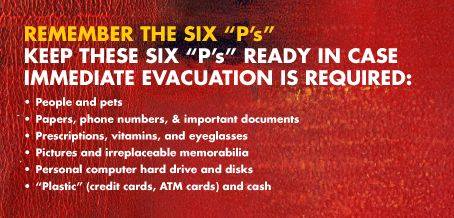
STORM AND HEAVY RAIN PREPAREDNESS
When storms or heavy rain is expected, the City of San Fernando encourages residents to take simple steps necessary to protect themselves from injury and their property from storm damage.When rainstorms impact the San Fernando area, flood control channels, arroyos and other low-lying areas can quickly fill with fast-moving water, creating a life threatening danger. It is against the law to be inside a flood control channel.
Flood Prevention and Storm Preparedness Tips
-
Ensure that your drains, gutters and downspouts are clean and functioning properly. This is especially important for flat-roofed buildings.
-
Keep stormwater troughs, pipes and culverts on your property free of debris.
-
Move valuable or easily damaged items away from low-lying areas prone to flooding.
-
Secure trash containers, household waste, chemical spills and outdoor storage before they are swept away, spread contamination or block storm drains.
-
Closely examine windows, skylights and doors that may benefit from caulking or weatherstripping.
-
Inspect your attic for “leaks” of sunlight, or signs of previous water damage that may indicate where pre-storm repairs are needed.
-
Establish household supplies (bucket, mop, towel and tarpaulin) to minimize damage from a sudden leak or stormwater seepage.
-
Prepare your household to remain safe (battery powered lamps, no candles) and functional (fully charged cell phone, manual garage door operation) in the event of a storm related power outage.
-
Review how to safely turn off your home’s electric, water and natural gas service in the event of severe storm damage.
-
Put the Flood Safety and other free Mobile Apps from the American Red Cross on your smartphone.
-
Discuss your Family Emergency Plan, including what every member of the family will do in the event of a flood or mudslide.
-
Prepare an Emergency Supply Kit that includes food, water, medications, flashlight, battery-powered radio, rain gear and first aid supplies.
-
Gather and safely store important documents to take with you in case of evacuation.
-
Confirm out-of-state family contacts so that friends and relatives can determine your location and status.
-
Consider the safety of those with disabilities or access and functional needs.
-
Plan for the needs of pets at home and if you are evacuated.
-
Identify multiple safe routes from your home or workplace to high ground and practice your evacuation plan.
-
Have sturdy, sensible shoes with nonskid soles for use in a rainstorm. Pack an umbrella, small flashlight and rain coat.
-
Check your car’s wipers, lights, tire inflation and tread wear to assure safe operation, and keep your vehicle fueled in case power is cutoff to local fueling stations.
-
Be prepared to monitor local news for official warnings, evacuation orders and the status of streets, highways and transit systems.
-
Be aware of local driving laws, and how to operate your vehicle safely or use public transit in conditions altered by weather.
-
Lower the level of your swimming pool to prevent overflow and flooding.
-
Determine if your home is located in a flood hazard or landslide prone area.
-
Landscape slopes with plants that are fire retardant, water wise, suitable for erosion control and allow for smart water retention or reuse. Consider the temporary use of plastic sheeting on slopes prone to erosion.
-
Large trees that could threaten your home should be examined by a certified arborist. Confirm that any hillside on your property has been evaluated by a licensed soil engineer.
-
If necessary, consult an engineer or licensed contractor to design or build permanent water and debris control systems for your property.
-
Contact your insurance agent to assure that your flood and storm coverage is adequate and in effect. Confirm the 24-hour contact, policy and claim filing numbers for your insurer(s). Place that information in your mobile phone and keep a printed copy in the glove box of your car.
-
Keep sandbags, plywood, plastic sheeting, lumber, hand tools and other materials handy for addressing additional stormwater issues.
Personal Safety During a Storm or Flood
-
When Thunder Roars, Go Indoors!
-
Limit non-essential travel, and avoid the urge to sightsee. Remind all household members not to play or linger near catch basins, canyons, flood control channels or storm drains.
-
Do not walk through flowing water. Drowning is the leading cause of flood deaths, mostly during flash floods. Currents can be deceptive; six inches of moving water can knock you off your feet.
-
Never drive through a flooded area where you cannot see the pavement, or bypass road barriers.
-
If you become stranded in your car by moving water, stay with your vehicle and move to the hood or roof if water continues to rise.
-
Stay away from power lines and electrical wires. Deadly electric current can travel through water.
-
Report downed power lines in the City of San Fernando to the Southern California Edison (800.611.1911). If the downed wires threaten life, call 911.
What should you do if you fall in moving water?
-
Remain calm. Don’t waste energy yelling for help after someone has spotted you.
-
Get ready to be rescued.
-
Try to float on your back with your legs straight and your feet pointed downstream.
-
Use your legs to shove yourself away from obstructions.
-
Keep your head up so that you can see where you are going.
-
Watch for obstacles and debris! If a tree or other stationary object is blocking the channel, forcing water over it, try to flip over on your stomach and approach the obstacle head-on, crawling over the top of it.
-
Most victims in swift water die when they get pinned against obstacles or get trapped in submerged debris and vegetation.
What if you see a person or pet fall into moving water?
-
Do not go into the water after the victim.
-
Do not try to pull the victim out with your hands, rope or similar device. Do not attach anything to yourself and toss it to a victim in the water. The force of the current will pull you in.
-
If possible, throw a floatation device to the victim, such as a boogie board, Styrofoam ice chest, basketball or other unattached object.
-
Immediately call 911.
-
Tell the 9-1-1 operator that a person or animal fell into the channel and is being swept downstream.
-
Give accurate information about where and when you saw the victim and what the victim was wearing.
-
Though members of your Los Angeles Fire Department are specially trained and equipped to respond to water rescues, not every victim survives. We therefore remind you that when it comes to swift moving water: ‘Stay Away and Stay Alive!’
Sandbags
-
Each year during the rainy season, Sandbags are available at 501 First Street, San Fernando. We’ll provide the sand and bags, but please bring a shovel (sorry, shovels keep disappearing).
-
Call San Fernando Public Works (818.898.1293) or email (PWDispatch@sfcity.org) for more info.
Click Here to download the City’s Storm Preparedness Brochure, it includes a useful emergency checklist.MULTI-HAZARD MITIGATION PLAN
The City of San Fernando prepared the Multi-Hazard Mitigation Plan in response to the Disaster Mitigation Act of 2000, which requires local governments to document their mitigation planning process, identify hazards and potential losses, and develop strategies for mitigation. The document is designed to produce the following benefits:- Reduction to loss of life and property, economic disruption, and disaster costs.
- Prioritization of hazard mitigation at the local level with emphasis on planning and public involvement.
- Promotion of education, formation of community-based partnerships, and leveraging of non-federal resources to implement long-term hazard mitigation activities.
WHAT IS 911? | ¿QUE ES EL 911?
Nine-one-one is the number to call to get help in a police, fire or medical emergency. A 911 call is transmitted over dedicated phone lines to the 911 answering point closest to the caller. Trained personnel then send emergency help as needed.What is enhanced 911?
Enhanced 9-1-1 is a system which routes an emergency call to the 9-1-1 answering center closest to the caller and automatically displays the caller’s telephone number. Advanced systems can also display the caller’s address (only from a residence or business phone). The 9-1-1 call taker will ask the caller to verify the information that appears on his/her computer screen. Location information is not yet available for calls made from cellular phones or when rural callers have only a route and box number for an address.
When should you use 9-1-1?
9-1-1 is only to be used in emergency situations. An emergency is any situation which requires immediate response from the police, the fire department or an ambulance. If you are ever in doubt, call 9-1-1. It’s best to be safe and let the call taker determine if it’s an emergency.
Do NOT call 911:
-
For information
-
For directions
-
For directory assistance
-
For paying tickets
-
For your pet
-
As a prank
-
When you’re bored and just want to talk
If you call 911 by mistake, do not hang up. Tell the call taker what happened so that he/she knows that there is no emergency.
What about prank 911 calls?
A prank call is when someone calls 911 for a joke, or calls 911 and hangs up. Prank calls not only waste time and money, but they can also be dangerous. If 911 lines or 911 call takers are busy with prank calls, someone with a real emergency may not be able to get the help they need. In some communities, it is considered illegal to make prank 911 calls.
How do you make a 911 call?
Dial 9, then 1 and 1 again. It is a free call. You can use any kind of phone — push button, rotary, cellular, cordless or pay phone (some pay phones may require coins to get a dial tone).
-
Stay calm and state your emergency
-
Speak loudly and clearly. Give the 911 call taker your name, address and phone number where help is needed.
-
Answer the call takers questions. Stay on the telephone if it is safe to do so, and do not hang up until the call taker tells you to do so.
What if a 911 caller does not speak English?
When necessary, the 911 call taker can often add an interpreter or other language line service for translation. A non-English speaking caller may hear a short conversation in English and some clicking sounds as an interpreter is added to the 911 call.
What if a 911 caller is hearing or speech impaired?
Communication centers which answer 911 calls have special keypad telephones for responding to 911 calls from hearing or speech impaired callers.
If a caller uses TTY/TDD, the caller should:
-
Stay calm, place the phone receiver into the TTY, call 911.
-
After the call is answered, press the TTY keys several times. This may help shorten the time necessary to respond to the call.
-
Give the call taker time to connect their TTY. If necessary, press the keys of the TTY again. The 911 call taker will answer and type a “GA.”
-
Tell what is needed — police, fire department or ambulance. Give your name, phone number and address where help is needed.
-
Stay on the telephone if it is safe to do so. Answer the call taker’s questions. If a hearing or speech impaired caller does not have a TTY/TDD, the caller should:
- Call 911 and do not hang up. By not disconnecting leaves the line open. With most 911 calls, the caller’s address is displayed on the call taker’s screen and the police will be sent.
Wireless Phones:
As in the basic 911 instruction, we emphasize that children should be cautioned NOT TO PLAY WITH THE PHONE, practice dialing or make prank calls to 911. This is especially true with wireless phones for the following reasons:
-
Some telephones will automatically dial 911 if a programmed key is depressed.
-
The number of wireless 911 calls received often exceeds the resources of public safety answering points.
-
The 911 system is for emergencies only.
How to dial:
NOTE: Wireless telephone handsets and procedures for making a call differ between models and manufactures. It is strongly suggested that children be instructed to discuss with their parents how to dial 911 calls from the wireless telephone they own or use. Children should be made aware of special function keys or speed dial features and all steps involved in making a 911 call.
LISTEN CAREFULLY: It is important to listen carefully, then speak loudly and clearly to the 911 dispatcher. If you receive a busy signal, hang up and call 911 again. If you hear a recorded message, DO NOT HANG UP. STAY ON THE PHONE UNTIL THE REAL OPERATOR ANSWERS.
NOTE: Children should be advised to listen carefully to what happens after they dial. Due to the number of calls received from wireless telephones, 911 calls sometimes get a busy signal or a recorded message before the call is answered by a live operator. Presenters should explain to children what to do if this occurs. For younger children, presenters may want to demonstrate the sound of a busy signal and give examples of the recorded message they might hear. One example of a recorded message is: “You have reached 911 emergency services. All operators are busy taking calls. Please stay on the line and your call will be answered by the first available call taker.” It is critical that children understand that if they hang up when they hear the recording and then redial, their call will go to the end of the waiting queue.
What to say:
-
Explain what is wrong-what type of emergency it is (i.e. fire, injury, accident, crime in progress).
-
Explain what type of help you need-fire, police, ambulance.
-
Explain where help is needed- location of the emergency.
-
Give your name and telephone number so that the operator is able to call you back if your call is disconnected. You may be asked to give your home address for reporting purposes.
How to describe where you are located:
-
Look for street names, big signs, or buildings you know.
-
Tell the dispatcher where you were coming from, where you are now and where you were going to (i.e. we left home to go to grandma’s house).
-
Tell the dispatcher if you are in a car, walking, or riding a bike, in a store, etc.
If you accidentally call 911:
-
DO NOT HANG UP.
-
Stay on the telephone until the dispatcher answers.
-
Explain that you accidentally called 911 and there is no emergency.
-
You will not be in trouble if you accidentally call 911. DO NOT hang up.
NOTE: As a matter of policy, if the 911 center receives the call back number on disconnect, an operator will attempt to call back to determine if there is a true emergency. Stress to the children that it is better to stay on the phone and tell the operator that they accidentally called 911. Eliminating the need for call back saves valuable call taker time for other emergency calls.
Do not play with the phone:
Children should be cautioned in the strongest terms against playing with wireless phones.
NOTE: Current statistics indicate that greater than 70% or more of all 911 calls made from wireless phones are accidentally dialed or are non-emergency in nature. Accidentally dialed 911 calls, particularly from certain models of wireless phones, have become a huge problem for 911 communication centers. In fact, one handset model will automatically dial 911 if the “9” key is depressed for more than two seconds. These calls are generated without pressing the send key. Anyone playing with the key pad or even hesitating while dialing a number that starts with a “9” can make an unintentional 911 call. Other models have preprogrammed emergency buttons that can also be activated accidentally.
When a 911 center receives the caller identification with these calls, they attempt a call back to determine if there is an emergency. Answering these inadvertent calls and making the necessary calls back take valuable time that could keep operators from being available for true emergency calls.
El nueve-once es el número de teléfono para recibir asistencia policiaca, de incendio o emergencia médica. La llamada al 911 se trasmite sobre una línea telefónica dedicada al centro del 9-1-1 más cercano. Personal entrenado manda la asistencia de emergencia necesaria.No juegue con el telefono:
Los niños deben ser advertidos lo más posible de no jugar con teléfonos inalámbricos.
TOME NOTA: Estadísticas indican que más del 70% de llamadas al 911 hechas con teléfonos inalámbricos son llamadas accidentales o de no-emergencia. Llamadas accidentales al 911, particularmente de ciertos modelos de teléfonos inalámbricos, han creado un gran problema para centros de comunicaciones del 911. Por cierto, hay un tipo de celular que automáticamente marca al 911 si se oprime la tecla “9” por más de dos segundos. Estas llamadas son hechas sin oprimir la tecla para mandar una llamada. Cualquier persona que juegue con la tecla o se detiene a marcar un número telefónico que empieza con un “9” puede hacer una llamada al 911 sin querer. Otro tipo de teléfonos inalámbricos tiene botones pre programados de emergencia que pueden ser activada accidentalmente.
Cuando el centro del 911 recibe la identificación con estas llamadas inadvertidas la operadora intenta regresar para determinar si hay una emergencia. El contestar estas llamadas toman tiempo valioso que pueden impedir a la operadora contestar llamadas de verdaderas emergencias.
Si usted llama al 911 accidentalmente:
-
NO CUELGUE.
-
Quédese en línea hasta que su llamada sea contestada.
-
Explique que llamo al 911 accidentalmente y no hay ninguna emergencia.
-
No será castigado por llamar al 911 accidentalmente. NO CUELGUE.
TOME NOTA: Como póliza, si el centro de emergencia recibe el número que llamo y desconecto, la operadora puede devolver la llamada al número que marco para verificar que no haiga ninguna emergencia. Enfatice a los niños que es mejor quedarse en línea y explicar a la operadora que marco el 911 accidentalmente. Al no tener que regresar la llamada ahorra tiempo valioso a la operadora para tomar otras llamadas de emergencia.
¿Como describir donde esta ubicado?
-
Busque nombre de calles, rótulos grandes o edificios que conoce.
-
Dígale a la operadora de donde venía, en donde está ahora, y hacia donde viajaba (Ejemplo: Salimos de casa para ir a la casa de la abuela).
-
Dígale a la operadora si está cerca de un vehículo, caminando o montando a bicicleta, dentro de una tienda, etc.
Que decir:
-
Explique que pasa-que tipo de emergencia tiene (incendio, accidente, crimen en progreso).
-
Explique que tipo de auxilio ocupa – bomberos, policía, ambulancia
-
Explique en donde se ocupa el auxilio- ubicación de emergencia.
-
De su nombre y número de teléfono a la operadora en caso de que su llamada sea desconectada. Le pueden pedir su domicilio por razones de reporte.
Como marcar:
TOME NOTA: Llamadas hechas con audífonos de teléfonos inalámbricos y el proceso para hacer una llamada varea según el modelo y fabricante. Se le sugiere que niños hablen con sus padres en como marcar al 911 de un teléfono inalámbrico que poséen o usan. Los niños deben ser advertidos de teclas con funciones especiales o de teclas de marca inmediata y seguir todos los pasos para marcar al 911.
ESCUCHE CUIDASAMENTE: Es muy importante que escuche cuidadosamente, y luego hablar fuerte y claro a la operadora del 911. Si recibe una señal ocupada, cuelgue y vuelva a marcar al 911. Si escucha una grabación NO CUELGUE. QUEDESE EN LA LINEA HASTA QUE ALGUIEN CONTESTE.
TOME NOTA: Aconseje a los niños de escuchar cuidadosamente a lo que pasa después de marcar. Debido al alto número de llamadas que se reciben de teléfonos inalámbricos, las llamadas al 911 pueden recibir una señal ocupada o una grabación antes de que la llamada sea contestada por una operadora. Presentadores deben explicar a los niños que hacer si esto ocurre. Para niños pequeños de edad, el presentador puede mostrar el sonido de una línea ocupada y dar ejemplos de mensajes que puedan recibir. Un ejemplo de tal mensaje puede ser: “You have reached 911 emergency services. All operators are busy taking calls. Please stay on the line and your call will be answered by the first available call taker.” (“Usted A llamado al servicio de emergencias 911. Todas las operadora se encuentran ocupadas tomando otras llamadas. Favor de mantenerse en línea y su llamada será contestada por la primera operadora disponible”). Es crítico que los niños entiendan que si cuelgan el teléfono al recibir una grabación y vuelven a marcar de nuevo, la llamada será puesta al final del orden de llamadas esperando ser atendidas.
Teléfonos Inalámbricos:
Asi como en las instrucciones básicas del 911 se enfatiza que los niños tengan cuidado y NO JUEGEN CON EL TELEFONO, practiquen marcar o hacer llamadas de broma al 911. Esto es cierto con teléfonos inalámbricos por las siguientes razones:
-
Algunos teléfonos marcan el 911 automáticamente si una tecla programada es presionada.
-
Si la cantidad de llamadas al 911 exceden los recursos de seguridad pública.
-
El sistema de 911 es para emergencias solamente.
¿Qué hacer si la persona que llama tiene dificultades para oír o hablar?
Centros de comunicación que responden a llamadas del 9-1-1 tienen teléfonos con teclas especiales para asistir a personas que tengan dificultades para oír o hablar.
Si la persona utiliza TTY/TDD, debería:
-
Mantenerse calmada, poner el recibidor de teléfono en el TTY, llamar al 911.
-
Cuando su llamada sea contestada, oprima las teclas de TTY varias veces. Esto podría reducir el tiempo necesario para responder su llamada.
-
Dele tiempo a la operadora para conectarse al TTY. Si es necesario, oprima las teclas del TTY de nuevo. La operadora del 9-1-1 tomara su llamada y escribirá “GA.”
-
Dígale lo que necesita – servicio de policía, bomberos o ambulancia. Provee su nombre, numero de teléfono, y dirección donde se necesita asistencia.
-
Manténgase en el teléfono si es seguro. Responda a las preguntas de la operadora. Si usted tiene dificultades para oír o hablar y no tiene TTY/TDD:
- Llame al 911 y no cuelgue. Al no desconectarse mantiene la línea abierta. Algunas llamadas al 911 muestran la dirección de la persona que llama en el pantalla de la operadora y envían a la policía.
¿Qué hacer si la persona que llama no habla inglés?
Cuando sea necesario, la operadora puede incluir un intérprete/traductor u otro servicio de lenguaje para traducir. Una persona que llama y que no hable inglés podría escuchar una conversación corta en inglés y algunos clics cuando el intérprete sea agregado a la conversación.
¿Cómo hacer una llamada al 911?
Marque el 9, luego el 1, y el 1 otra vez. La llamada es gratis. Puede usar cualquier tipo de teléfono – de botón, rotativo, celular, inalámbrico o teléfono público (algunos teléfonos públicos pueden requerir monedas para hacer la llamada).
-
Manténgase calmado y explique su situación
-
Hable en voz alta y claro provea al operador del 911 su nombre, dirección, y numero de teléfono donde se necesita la asistencia.
-
Responda a todas las preguntas de la operadora. Manténgase en el teléfono siempre y cuando sea seguro y cuelgue hasta que la operadora le indique.
¿Qué tal las llamadas de broma al 911?
Una llamada de broma es cuando alguien llama al 911 de broma, o llama al 911 y cuelga el teléfono. Las llamadas de broma no solamente gastan tiempo y dinero, sino que también pueden ser peligrosas. Si las líneas o operadores del 911 están ocupadas con una llamada de broma, es posible que alguien con una emergencia no recibirá la asistencia que necesita. En algunas comunidades, es ilegal hacer llamadas de broma al 911.
NO llame al 911:
-
Para información
-
Para direcciones
-
Para asistencia de directorio
-
Para pagar sus infracciones
-
Para su mascota
-
Como broma
-
Cuando esta aburrido y quiere hablar con alguien
Si llama al 911 por equivocación, no cuelgue el teléfono. Deje saber a la operadora lo que paso para que el/ella sepa que no hay una emergencia.
¿Cuándo debería usar el 911?
El 911 debe ser usado solamente para casos de emergencia. Una emergencia es cualquier situacion que requiere asistencia inmediata de policía, bomberos o ambulancia. Si tiene duda de cuando llamar, llame al 911. Es mejor estar seguro y dejar que la operadora determine si es una emergencia.
¿Qué es el 911 mejorado?
El 911 mejorado es un sistema que dirige una llamada de emergencia al centro del 911 más cercano a la persona que llama y automáticamente muestra el número telefónico de la persona que llama. Sistemas avanzados también muestran la dirección de la persona que llama (solamente de un teléfono residencial o de comercio). La persona tomando la llamada del 911 verifica la información que se recibe en el monitor de la computadora. Información sobre la ubicación de teléfonos celulares o cuando llama de un área rural con un numero de ruta o caja telefónica aún no está disponible.
ADDITIONAL RESOURCES
- City of San Fernando Resiliency Coalition: https://preparesocal.org/socal-regions/san-fernando/
- Homeland Security: https://www.ready.gov/
- Homeland Security Youth-Oriented Preparedness: https://www.ready.gov/kids
- City of Los Angeles Emergency Management: http://emergency.lacity.org/
- City of Los Angeles Fire Department: http://www.lafd.org/
- California Highway Patrol: https://www.chp.ca.gov/
- American Red Cross: http://www.redcross.org/
- FEMA: https://www.fema.gov/
INCIDENT ARCHIVE
SOUTHERN CALIFORNIA PUBLIC SAFETY POWER SHUTOFF (PSPS)
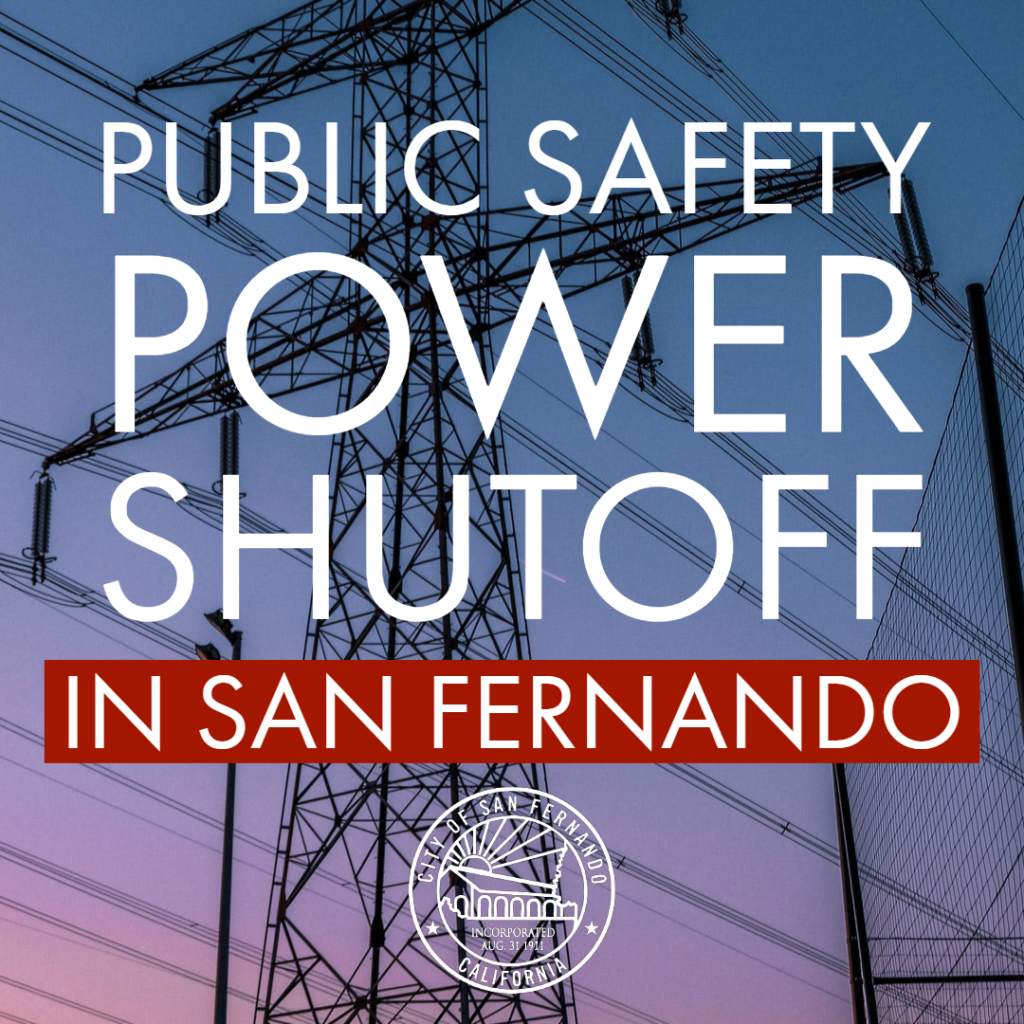 (10/27/20; 7:50 am)
(10/27/20; 7:50 am)Currently, Southern California Edison has NOT issued a PSPS for the San Fernando Area. Visit this website and our social media for updates.
IF YOU SEE A DOWNED POWER LINE, STAY AWAY AND CALL 911!
Visit https://www.sce.com/wildfire/psps for the current shutoff status and tips on how to prepare for an electric outage.
(10/26/20; 9:00 pm)Due to improved weather conditions, Southern California Edison has removed San Fernando from Public Safety Power Shutoff (PSPS) consideration. No electric service will be proactively turned off at this time. If a non-PSPS outage occurs, SCE will work as quickly as possible to restore service.
IF YOU SEE A DOWNED POWER LINE, STAY AWAY AND CALL 911!
Visit https://www.sce.com/wildfire/psps for the current shutoff status and tips on how to prepare for an electric outage.
(10/26/20; 9:05 am)Due to current weather conditions, Southern California Edison has issued a Public Safety Power Shutoff and may shut off the power in specific sections of San Fernando within the next 1 to 4 hours. This does not guarantee that your power will be shut off, but it might, so it’s best to stay prepared.
Should you lose power and need a place to shelter safely, Las Palmas Park will be open until 3 pm or until the power returns.
IF YOU SEE A DOWNED POWER LINE, STAY AWAY AND CALL 911!
Visit https://www.sce.com/wildfire/psps for the current shutoff status and tips on how to prepare for an electric outage.
LOCAL EMERGENCY DUE TO CIVIL UNREST
6/5/20LOCAL EMERGENCY DUE TO CIVIL UNREST & CURFEW ORDER RESCINDED
Due to relative calm in the City of San Fernando, the 2020-06-04 curfew order has been amended to rescind the curfew order.
Thank you for your cooperation and assistance with keeping San Fernando safe.
Download City of San Fernando Ratified & Modified Proclamation of Local Emergency in Response to Widespread Civil Unrest: ENGLISH
Download City of San Fernando Order No. 2020-06-05 Curfew Order in City of San Fernando (6/5/20): ENGLISH
6/4/20LOCAL EMERGENCY DUE TO CIVIL UNREST & CURFEW ORDER EXTENDED
Although there is currently no civil unrest in the City of San Fernando, due to the escalating situation throughout various areas of Los Angeles County, the city has extended the ordered curfew for all non-essential travel effective at 9 pm tonight (6/4/20) through 5 am tomorrow morning (6/5/20).
Thank you for your cooperation and assistance with keeping San Fernando safe.
Download City of San Fernando Ratified & Modified Proclamation of Local Emergency in Response to Widespread Civil Unrest: ENGLISH
Download City of San Fernando Order No. 2020-06-04 Curfew Order in City of San Fernando (6/4/20): ENGLISH
Download Los Angeles County Executive Order Amendment No. 3: ENGLISH
6/3/20LOCAL EMERGENCY DUE TO CIVIL UNREST & CURFEW ORDER EXTENDED
Although there is currently no civil unrest in the City of San Fernando, due to the escalating situation throughout various areas of Los Angeles County, the city and county have extended the ordered curfew for all non-essential travel effective at 9 pm tonight (6/3/20) through 5 am tomorrow morning (6/4/20).
Thank you for your cooperation and assistance with keeping San Fernando safe.
Download City of San Fernando Ratified & Modified Proclamation of Local Emergency in Response to Widespread Civil Unrest: ENGLISH
Download City of San Fernando Order No. 2020-06-03 Affirming the June 3, 2020 County Curfew Order in City of San Fernando: ENGLISH
Download Los Angeles County Executive Order Amendment No. 3: ENGLISH
6/2/20LOCAL EMERGENCY DUE TO CIVIL UNREST & CURFEW ORDER EXTENDED
Although there is currently no civil unrest in the City of San Fernando, due to the escalating situation throughout various areas of Los Angeles County, the city and county have extended the ordered curfew for all non-essential travel effective at 6 pm tonight (6/2/20) through 6 am tomorrow morning.
Thank you for your cooperation and assistance with keeping San Fernando safe.
Download City of San Fernando Ratified & Modified Proclamation of Local Emergency in Response to Widespread Civil Unrest: ENGLISH
Download City of San Fernando Order No. 2020-06-02 Affirming the June 2, 2020 County Curfew Order in City of San Fernando: ENGLISH
Download Los Angeles County Executive Order Amendment No. 2: ENGLISH
6/1/20LOCAL EMERGENCY DUE TO CIVIL UNREST & CURFEW ORDER EXTENDED
Although there is currently no civil unrest in the City of San Fernando, due to the escalating situation throughout various areas of Los Angeles County, the city and county have extended the ordered curfew for all non-essential travel effective at 6 pm tonight through 6 am tomorrow morning.
Thank you for your cooperation and assistance with keeping San Fernando safe.
Download City of San Fernando Proclamation of Local Emergency in Response to Widespread Civil Unrest: ENGLISH
Download City of San Fernando Order No. 1 Affirming County Curfew Order in City of San Fernando: ENGLISH
Download Los Angeles County Executive Order: ENGLISH
5/31/20LOCAL EMERGENCY DUE TO CIVIL UNREST & CURFEW ORDER
Although there is currently no civil unrest in the City of San Fernando, due to the escalating situation throughout various areas of Los Angeles County, the city and county have ordered a curfew for all non-essential travel effective at 6 pm tonight through 6 am tomorrow morning.
Thank you for your cooperation and assistance with keeping San Fernando safe.
Aunque ahora no existe un conflicto civil en la ciudad de San Fernando, debido a las situaciones que están escaldando en varias zonas del Condado de Los Ángeles, la ciudad de San Fernando y el Condado de Los Ángeles han ordenado un toque de queda.
Favor de quedarse en casa y no tomar viajes innecesarios empezando a las seis (6:00) de la noche hasta las seis (6:00) de la mañana.
Gracias por su cooperación y apoyo en mantener la seguridad de nuestra ciudad.
Download City of San Fernando Proclamation of Local Emergency in Response to Widespread Civil Unrest: ENGLISH
Download City of San Fernando Order No. 1 Affirming County Curfew Order in City of San Fernando: ENGLISH
Download Los Angeles County Executive Order: ENGLISH
SOUTHERN CALIFORNIA EDISON PUBLIC SAFETY POWER SHUTOFF
 (10/30/19; 2:10 pm)
(10/30/19; 2:10 pm)Power has been restored throughout the City. All traffic signals are operable.
(10/30/19; 11:21 am)City-wide survey of traffic signals was conducted. Currently, power is out at the below intersections. Stop signs are posted at all effected intersections and should be treated as four-way stops.
- Chatsworth Dr & Celis St
- Brand Blvd & Pico St
- Brand Blvd & Mott St
- Brand Blvd & Kewen
- San Fernando Mission Blvd & OMelveny Street
- Brand Blvd & Glenoaks Blvd
- Griswold St & Glenoaks Blvd
- Maclay Ave & Glenoaks Blvd
- Arroyo St & Glenoaks Blvd
- Maclay Ave & Seventh Street
- Maclay Ave & Fifth Street
- Maclay Ave & Fourth Street
PLEASE USE CAUTION WHEN DRIVING THROUGHOUT THE CITY.
(10/30/19; 9:49 am)Power is out at Recreation Park (208 Park Avenue). The facility is closed to the public and all programs are cancelled for today.
(10/30/19; 8:30 am)The City of San Fernando is experiencing a Public Safety Power Shutoff throughout portions of the city. Several intersections have lost power. INTERSECTIONS WITHOUT POWER SHOULD BE TREATED LIKE FOUR-WAY STOP SIGNS.
Intersections without power include the following:
- Maclay Ave & Seventh St
- Maclay Ave & Glenoaks Blvd
- Glenoaks Blvd & Brand Blvd
- Glenoaks Blvd & Griswold St
- Glenoaks Blvd & Arroyo St
- Brand Blvd & Pico St
- Brand Blvd & Kewen St
- Brand Blvd & Mott St
- Celis St & Chasworth Dr
- SF Mission Blvd & O’Melveny St
Public Works crews are placing stop signs at all effected intersections.
PLEASE USE CAUTION WHILE DRIVING THROUGHOUT THE CITY.
IF YOU SEE A DOWNED POWER LINE, STAY AWAY AND CALL 911!
Visit SCE’s website for the current shutoff status and how to prepare for an electric outage: https://www.sce.com/safety/wildfire/psps
SCE Veterans Circuit Map
SCE Lopez Circuit Map
TICK FIRE
A fire ignited in the Santa Clarita region of Los Angeles on October 24, 2019. Firefighters continue to battle this wind driven fire as it jumped the 14 freeway overnight.Current Status:
- Click here to visit the County of Los Angeles Fire Department website.
- Click here to visit the City of Santa Clarita Emergency Updates website.
School Closures: Click here to visit the Los Angeles Unified School District website.
SADDLE RIDGE FIRE
A large brush fire ignited in the Sylmar region of Los Angeles on October 10, 2019, and grew to over 4,000 acres through the night. The fast moving fire was driven by winds in excess of 60MPH.Current Status: Click here to visit the Los Angeles Fire Department website
Assistance for Property Owners: Click here for information from the Los Angeles County Assessor
CONTACT US
POLICE FACILITYPolice Department
910 First Street, San Fernando, CA 91340Non-Emergency (818) 898-1267extension 0 for DispatcherPROPERTY BUREAU
Monday through Friday | 8:30 am to 5 pm
(818) 898-1277CITY HALL117 Macneil Street, San Fernando, CA 91340(818) 898-1200PUBLIC WORKS
Monday through Thursday | 7:30 am to 5:30 pm
Friday | 8 am to 5 pm
(818) 898-1293After Hours Emergency
(818) 898-1267CODE ENFORCEMENT
Monday through Thursday| 7:30 am to 5:30 pm
Friday | 8 am to 5 pm
(818) 898-1227ANIMAL CARE & CONTROLLos Angeles County
(661) 257-3191 -


